The Mozartplatz (Mozart Square), a rectangular square located in the center of the old Salzburg historical district, is flanked by Residenz- and Waagplatz squares. This popular tourist attraction in the heart of Salzburg’s Old City is an ideal starting point for city tours.
The main traffic axis, from west to east, ran across the square from Universitätsplatz via Alten Markt and Residenzplatz, which gained additional importance with the construction of the Sigmundstore . From the square, you have direct access to Neue Residenz, Salzburg Cathedral and Traklhaus on Waagplatz.
Check out “Salzburg Cathedral“
The square was planned by Wolf Dietrich von Raitenau in 1588. In 1620, Paris Lodron left the building plots, in the east of the square, to the cathedral architect Santino Solari while on the north, he left the plots to the High Prince Council of Friedrich von Rehlingen. House Mozartplatz 1, the New Residence, now houses the Salzburg Museum .
Mozart Square and its buildings have close ties to the story of the famous boy genius Wolfgang Amadeus Mozart. Constanze Mozart-Nissen, Mozart’s wife, once lived at the house at No. 8 Mozart Square. A plaque, installed on the wall of the house, reminds us of that time.
The focal point and standing in the middle of Mozart Square is the Mozart Monument, designed by Ludwig Schwanthaler and cast in bronze by Johann Baptist Stiglmaier, the memorial was solemnly unveiled on September 5, 1842 in the presence of Franz Xaver and Carl Thomas, both Mozart’s surviving sons. However, Mozart’s widow could no longer experience the inauguration (She died on May 1842). King Ludwig I of Bavaria donated the marble plinth of the bronze statue.
The well-structured Rehlingen (Antretterhaus), a splendid and lively Rococo building at Mozartplatz 4, is the former city palace (Stadpalis Rehlingen) of the noble family of the Lords of Rehlingen who lived here around 1592 until September 25, 1765 when Johann Ernst von Antretter, the chancellor of the Salzburg countryside and court war councilor, and his wife Maria Anna bought this house.
Subsequently, the Antretter family closely involved Leopold Mozart and his family. Together with Wolfgang Amadeus Mozart, Johann’s son Cajetan Antretter was a member of the Bölzlschützenkompanie, while Johann’s daughter was a student of Maria Anna (“Nannerl”) Mozart.
The Antretter family also commissioned the Antretter Serenade, KV 185, a well-known serenade for orchestras in D major by Wolfgang Amadeus Mozart. On January 28, 1793, the property was auctioned off to the court book printer Franz Xaver Duyle (ca.1743 – 1804 ) and his wife Theresia Weibhauser. Others who lived in the house were, among others, Johann Alois Duregger (died 1876) and Otto Spängler (1841 – 1919).
It has two courtyards, a richly structured wicker arch portal built between the 16th and 18th centuries and elegant, artfully shaped facade with curved window frames that date from around 1760. The portals, on the first floor of the house, are made of red marble with relief medallions (lion heads, portraits, Caesar head, pictures of stork, pelican and phoenix) made around 1550 (the coat of arms of the Eberl von Strasenegg bears the year 1656). In addition to the law firms of various lawyers, the Antretterhaus also houses the Institute for Musicology at the University of Salzburg.
The noteworthy, private house chapel (Hauskapelle Mariae Himmelfahrt) attached to the main house, built in 1592 by Friedrich von Rehlingen on the old city wall and clearly visible from Rudolfskai, is adorned with delicate framed Rococo windows and a bell tower with an onion helmet.
The Antretterhaus is adjoined by the low, two-storey Imhofstöckl (Mozartplatz 5–7). Built shortly before 1620, it is a simple, elongated house covered with wooden shingles and divided by arched, basket-handle portals. It is only separated from the old Paris Lodron wall by a narrow courtyard. Today, among other things, an official building of the magistrate (cultural department) is housed here.
The three Kanonikalhöfe (Mozartplatz 8, 9 and 10), courts that date from the 17th century, have a uniform facade and. House No. 9 bears the coat of arms of Prince Archbishop Sigismund von Schrattenbach and a coat of arms of Max Gandolf von Kuenburg, including the inscription (1670), can be found above the northern side portal.
After the first owner Santino Solari sold the buildings to the cathedral chapter, the cathedral canons lived here for a long time. Today, apart from apartments, the main offices of the Salzburg State Government and the State School Council are housed there.

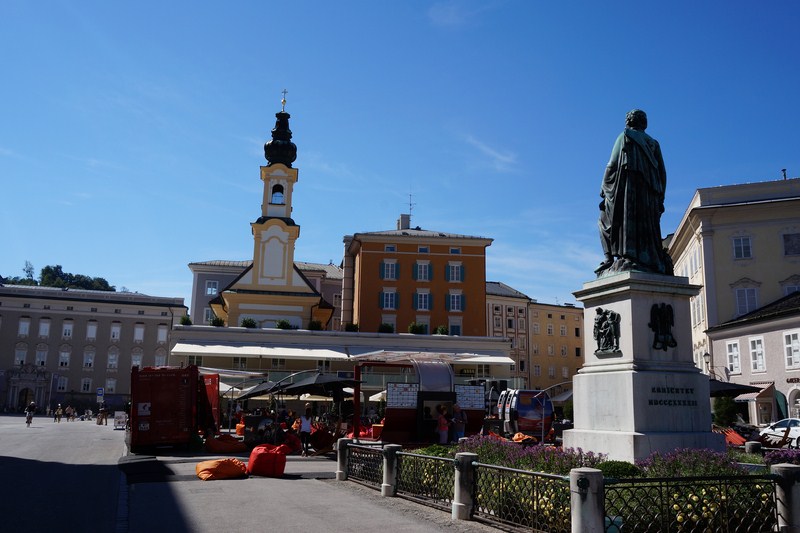
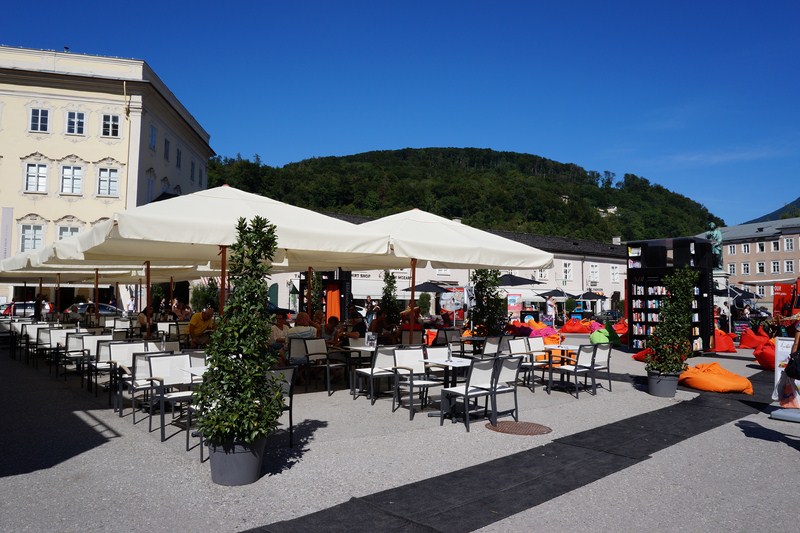
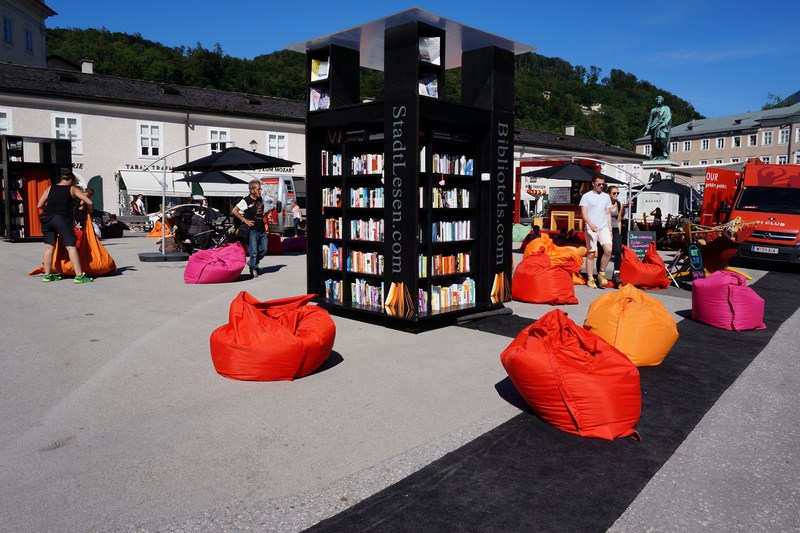
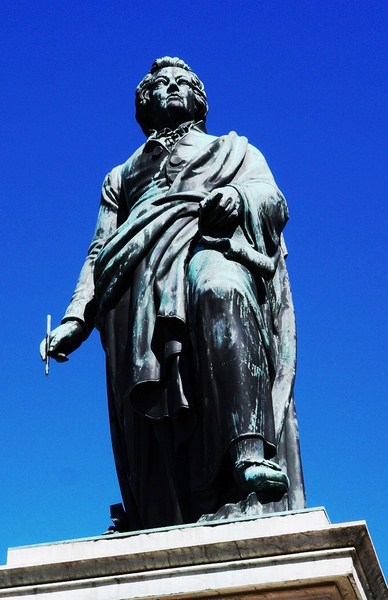
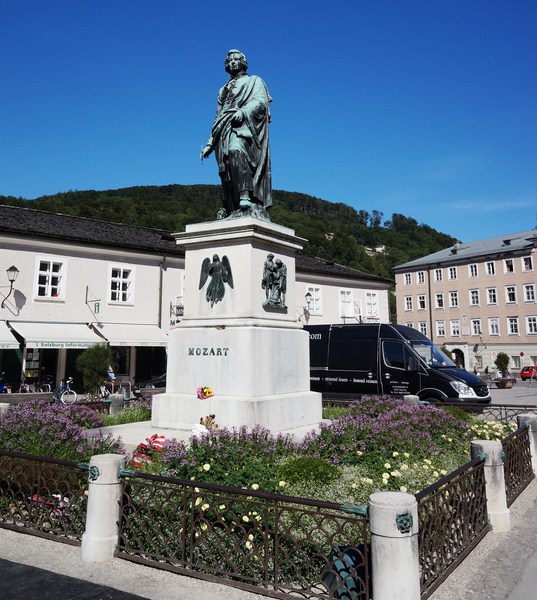
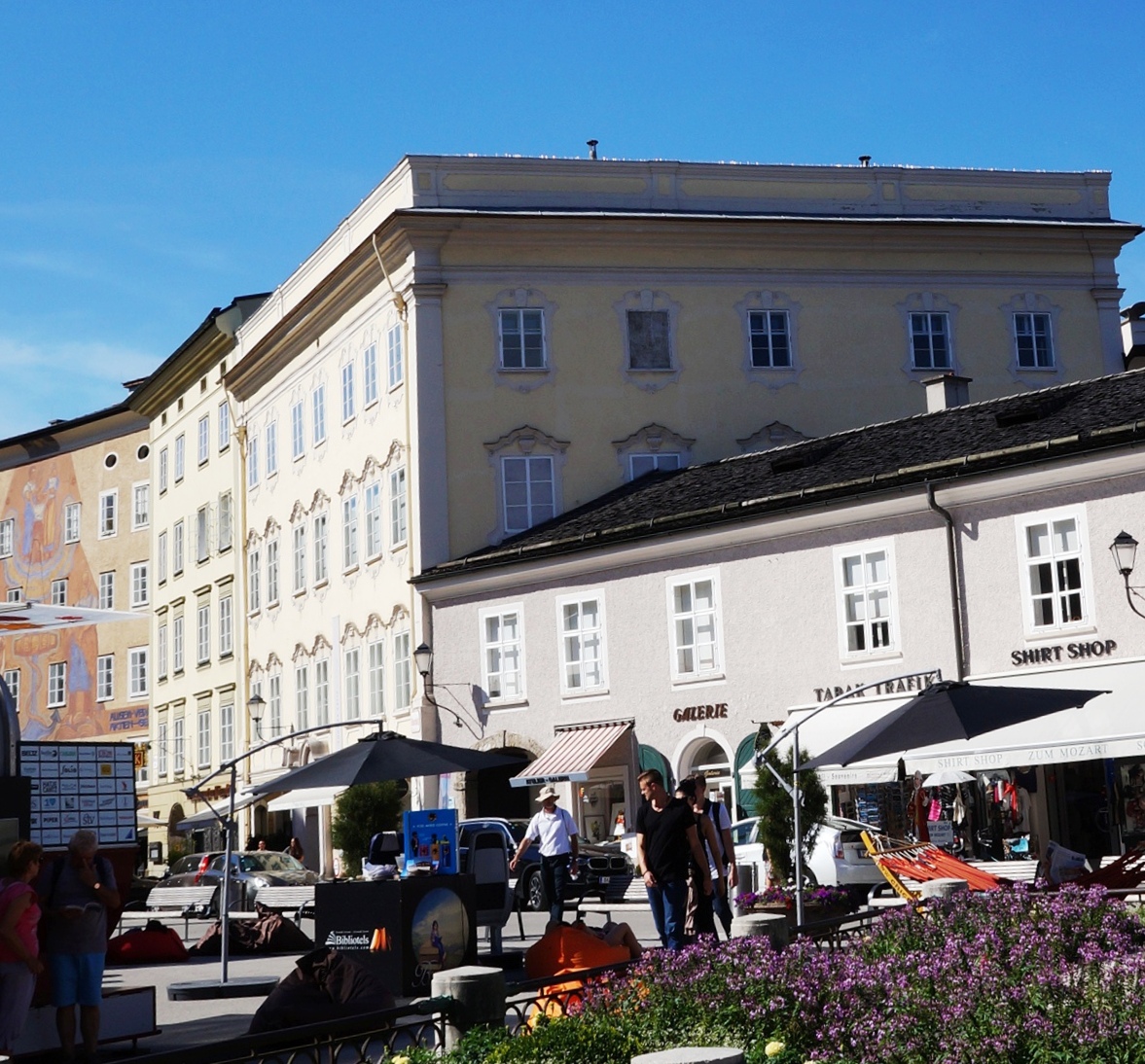
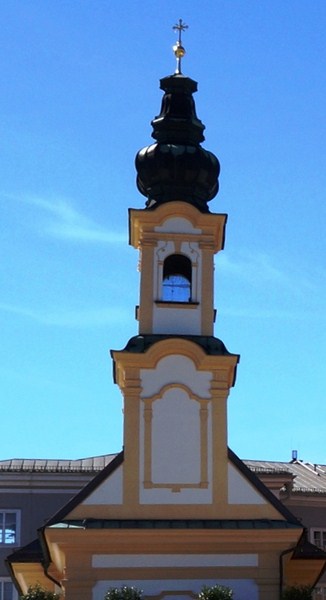
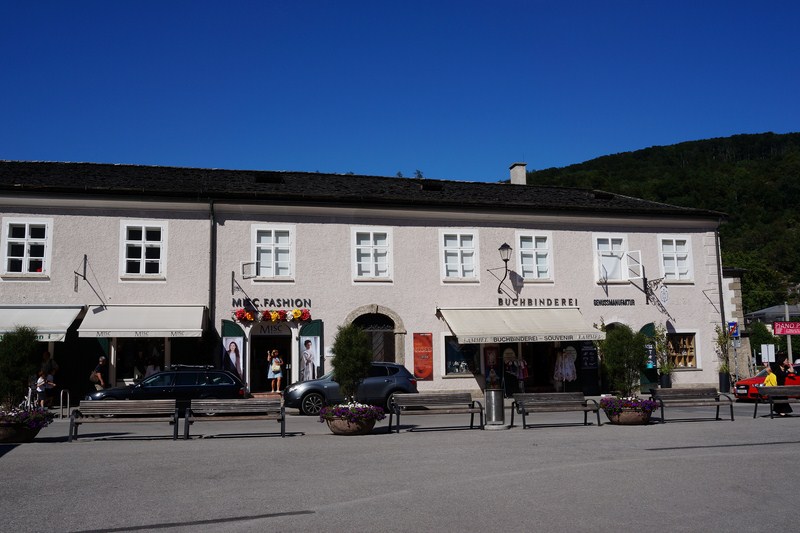
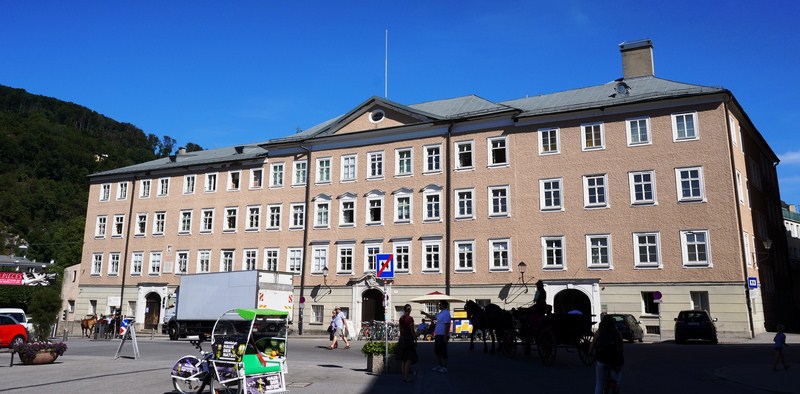
Pingback: Residenzplatz (Salzburg, Austria) – B.L.A.S.T. – Live Life to the Fullest ……… Don't Stay Put